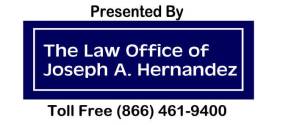



|
|
|
HIV Transmission from Mother to Child Resulting From Medical Malpractice
People who become infected with HIV may have no symptoms for up to ten years, but they can still transmit the infection to others. Meanwhile, their immune system gradually weakens until they are diagnosed with AIDS. Acute HIV infection progresses over time to asymptomatic HIV infection, then to early symptomatic HIV infection and later, to AIDS (very advanced HIV infection). Most individuals infected with HIV will progress to AIDS if not treated. However, there is a very small subset of patients who develop AIDS very slowly or never at all. These patients are called non-progressors. HIV Transmission from Mother to Child
The breast milk of an HIV-infected mother contains the HIV virus, and while small amounts of breast milk do not pose significant threat of infection to adults, it is a viable means of transmission to infants. Approximately 5% of vertical transmission occurs via breast milk. Prevention of HIV Transmission from Mother to ChildThe first step in preventing the transmission of HIV from mother to child is to recognize that the mother is HIV infected. A pregnant woman may exhibit symptoms of HIV infection which should then result in treatment to prevent transmission of the virus to her child. Some of the early symptoms of HIV infection and AIDS that a pregnant woman may exhibit can include:
Combination antiretroviral therapy with such drugs as zidovudine and didanosine, zidovudine and lamivudine, or didanosine and stavudine with protease inhibitor-containing triple combinations, can significantly provide both immunologic and virologic benefits. Such combination therapies confer significant survival benefits in infected children. Children should be followed with blood work frequently after beginning antiretroviral therapy. Complications of antiretroviral therapy in children include myopathy, pancreatitis, dyslipidemia, insulin resistance, glucose intolerance, changes in body shape, and lactic acidosis. Routine clinical monitoring should thus include liver enzymes, and a complete blood count for glucose, electrolytes and anion gap, total cholesterol, and triglycerides. Vaccinations should include Haemophilus influenzae and pneumococcal conjugate vaccines as encapsulated bacteria cause considerable morbidity for HIV-infected children. Pneumococcal conjugate vaccine is recommended for children 2 to 5 years of age who have not already received it, followed by 23-valent pneumococcal polysaccharide vaccine. Varicella vaccine, a live virus vaccine, can be considered for HIV-infected children without immunosuppression. Measles, mumps and the rubella vaccine can be safely given to HIV-infected children who do not have severe immunosuppression. Life Expectancy For Children with HIV infectionThe course of HIV and the life expectancy of a child with HIV can vary greatly. There are two major groups of children with HIV. One group consists of rapid progressors, who develop symptoms early in life, develop serious complications and AIDS early and often die before the age of five. The other group consists of long term survivors, who generally develop symptoms much later (some not until their early teens) and live longer. Generally, children with perinatal infection do not survive beyond their early 20's. The median survival age is 8 to 9 years. If Your Child Has HIV
Law Office of Joseph A. Hernandez, P.C. Thank you for visiting the Law Office of Joseph A. Hernandez. The material located on our law firm's web site is intended to be a resource for present and prospective clients for informational purposes only and is not intended to be legal (or medical) advice. This web site is not an offer to represent you. The act of sending electronic mail to our firm or to Attorney Hernandez does not create an attorney-client relationship and does not obligate the Law Office of Joseph A. Hernandez or Mr. Hernandez to respond to your email or to represent you. No attorney-client relationship will be formed unless you enter into a signed agreement of representation with the Law Office of Joseph A. Hernandez. You should not act, or refrain from acting, based upon any information at this web site without seeking professional legal counsel. Under the rules of the Supreme Judicial Court of Massachusetts and other rules, this material may be considered advertising. Licensed to practice law in the State of Massachusetts. This website does not represent other licenses, or certifications of specialization or expertise that may be available in certain states. |